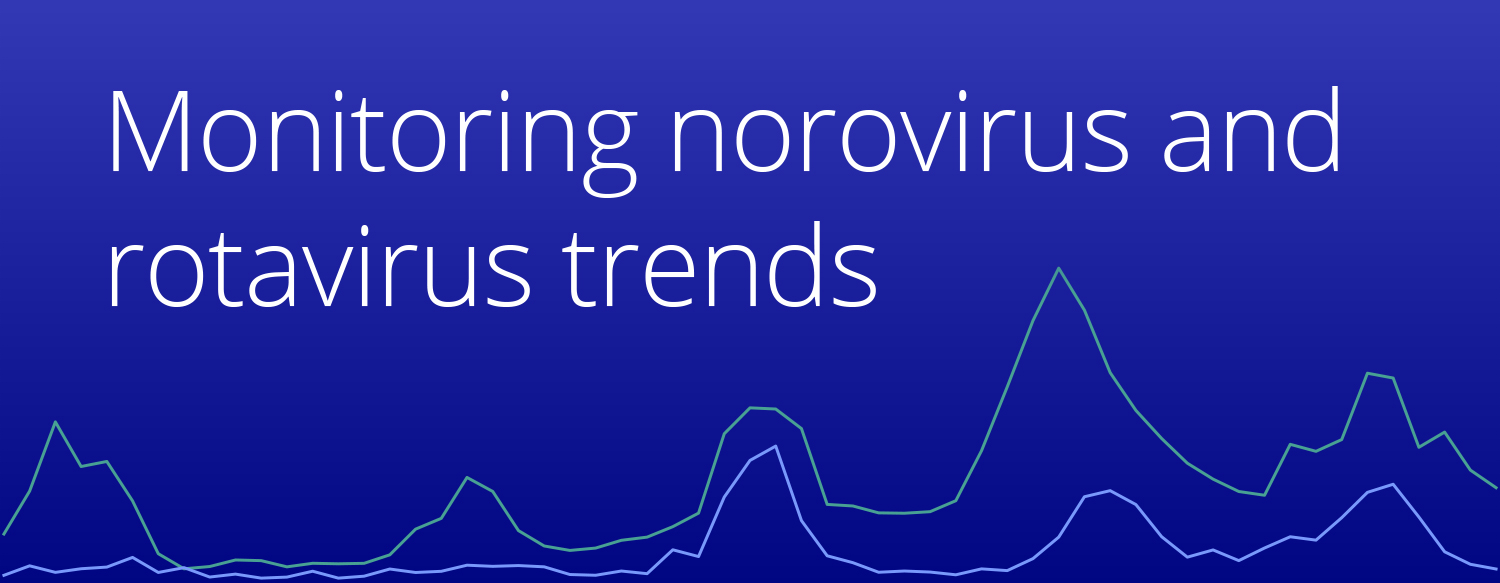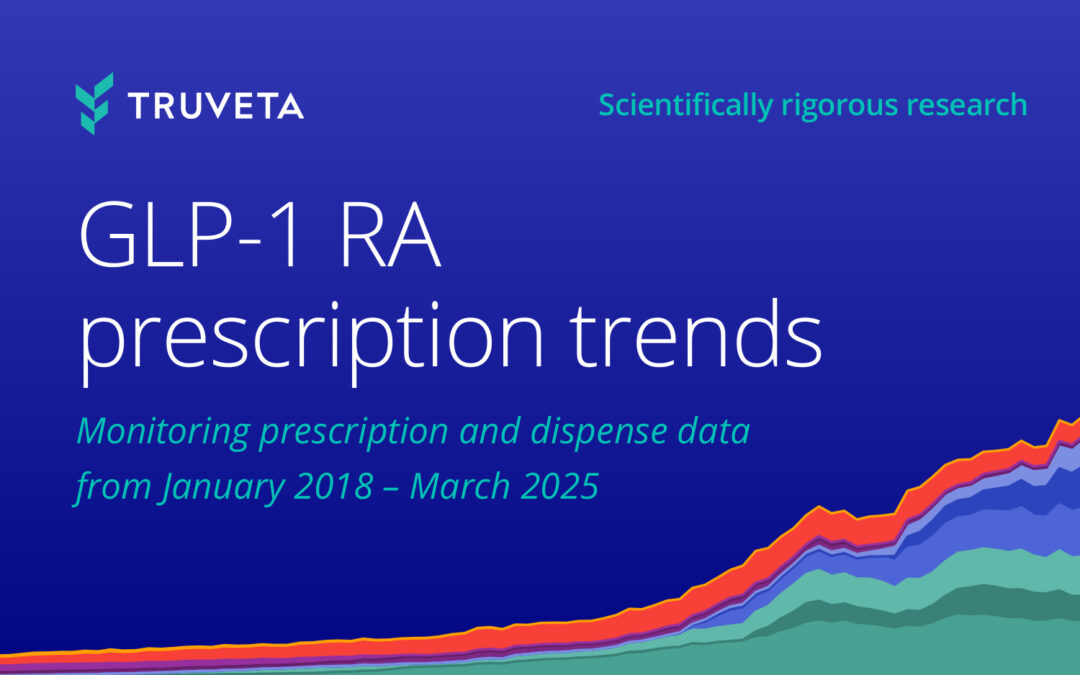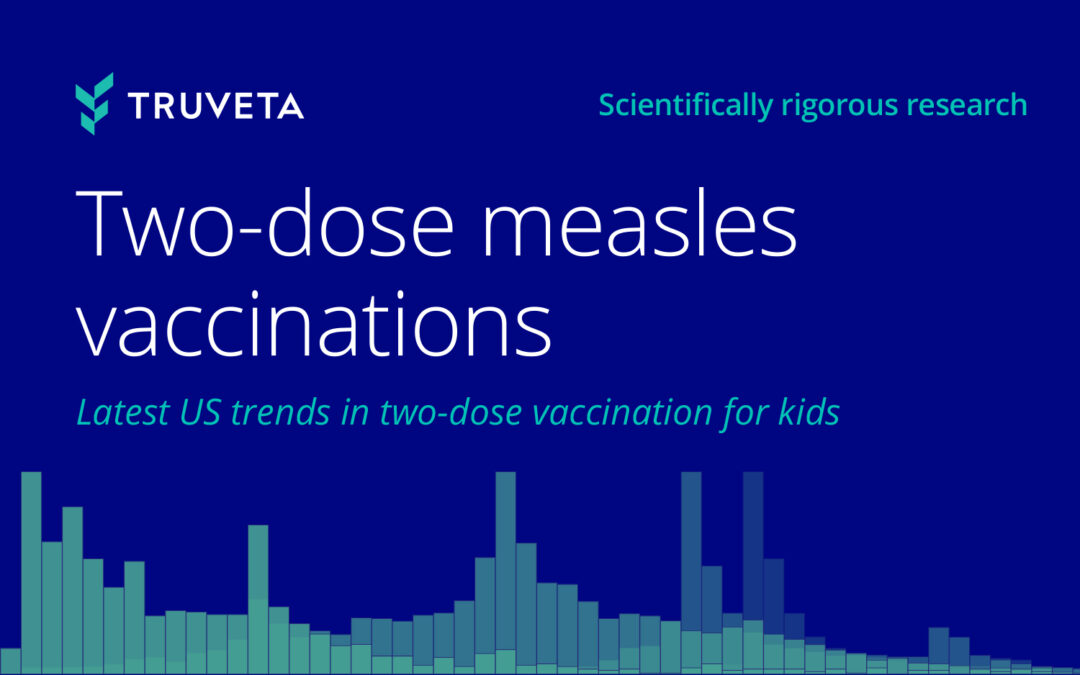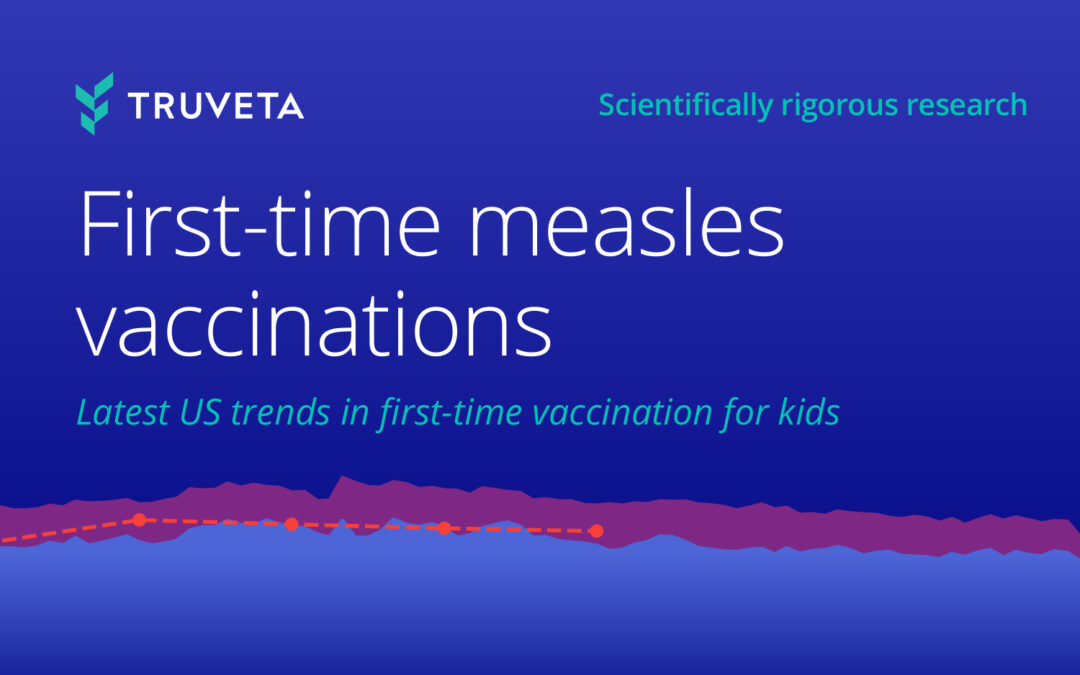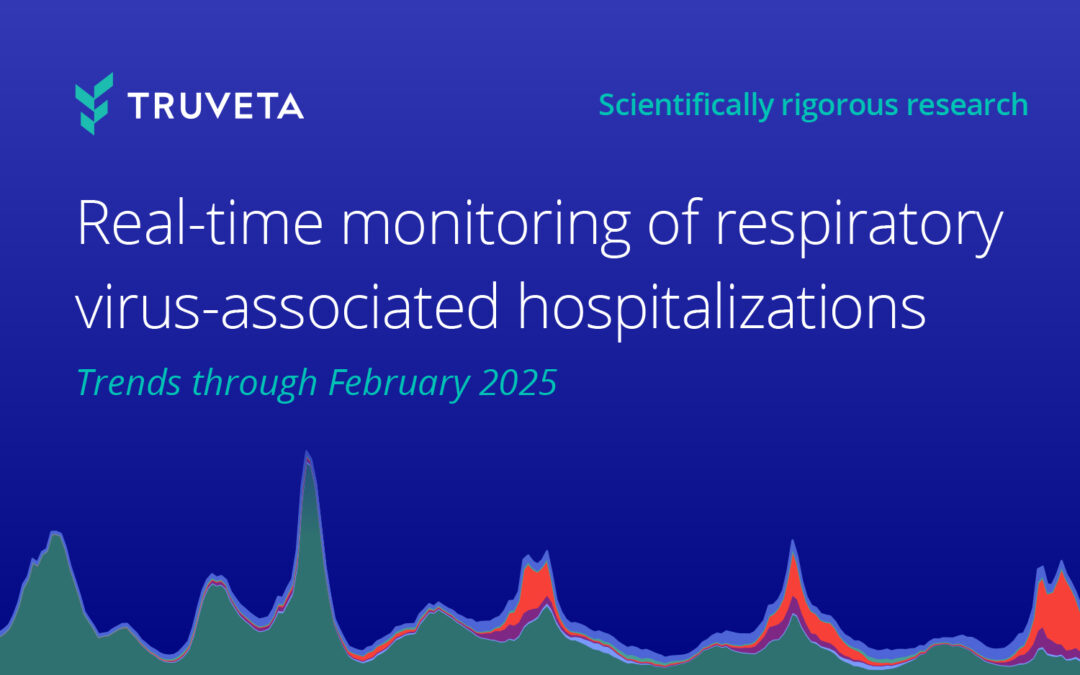- The overall trends of hospitalizations associated with viral gastroenteritis – norovirus and rotavirus – show a steady decrease over the last few months, leading to a rate of 0.04% in August 2024 in the overall population.
- However, we see first indicators that the next season is already beginning for the population aged 0-4 years old with an increase in the hospitalization rate of +196.7% from July.
- In the overall and adult over age 65 population, norovirus causes 4 to 5 times higher hospitalization rates than rotavirus. However, in the infant and child population (age 0-4), both norovirus and rotavirus have similar hospitalization rates.
Because Truveta Data provides the most complete, timely, and clean de-identified EHR data, including full patient medical records, notes, and images, linked with claims, SDOH, and mortality data for more than 100 million patients across the US, we can show the latest trends in these viral gastroenteritis-associated hospitalizations, including valuable insight into two high-risk populations: infants and children (age 0-4 years old) and older adults (age 65 and over).
This blog provides a snapshot of the key findings with data through August 2024 in the report specific to the overall population across both norovirus and rotavirus, as well as for two high-risk populations: infants and children (age 0-4 years old) and older adults (age 65 and older). For the full analysis – inclusive of demographics, comorbidities, and overall trends in virus-associated hospitalizations across all age groups for each virus, see the complete report on MedRxiv or explore the data directly within Truveta Studio.
Key findings: Trends in viral gastroenteritis-associated hospitalizations and test positivity
Overall population trends
Hospitalizations associated with norovirus and rotavirus accounted for 0.04% of all hospitalizations in August 2024 (-18.2% from July 2024). Norovirus-related hospitalizations decreased less than rotavirus-related hospitalizations (-16.2% vs -31.7%).
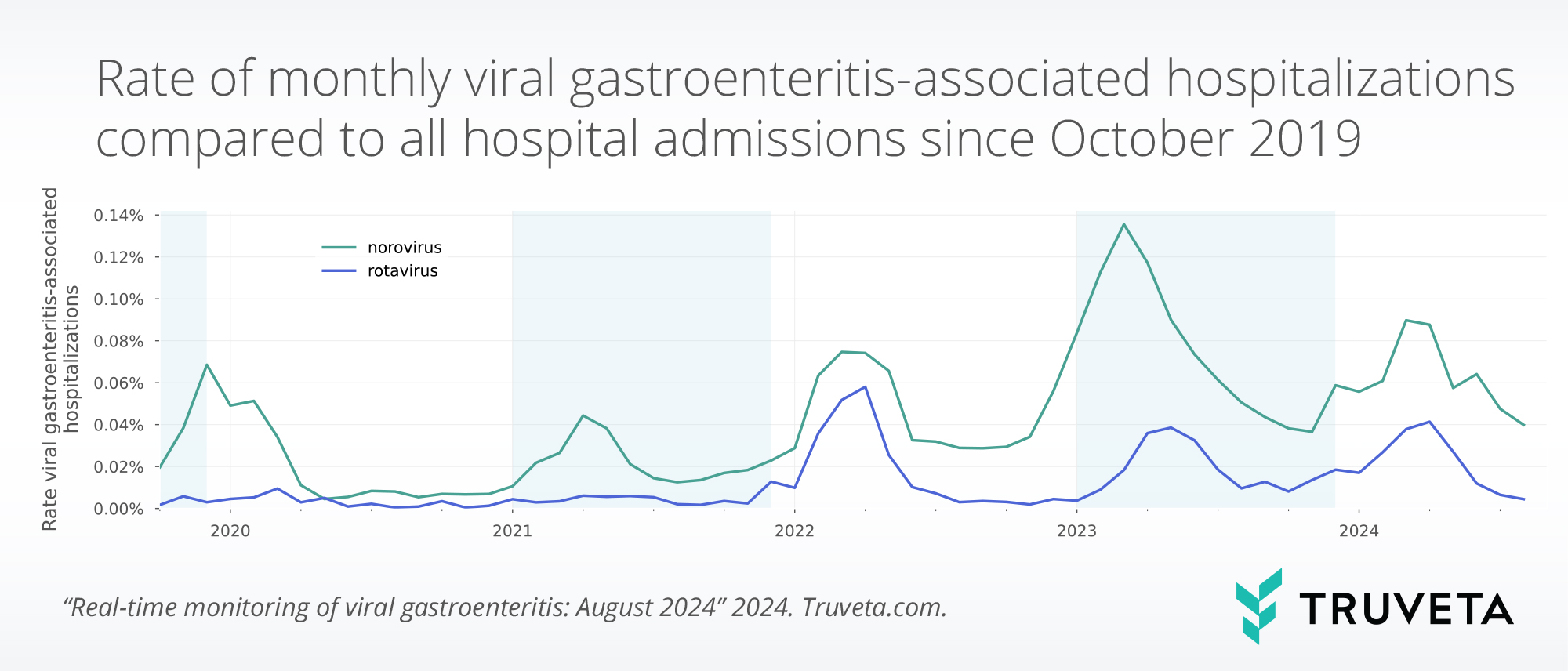
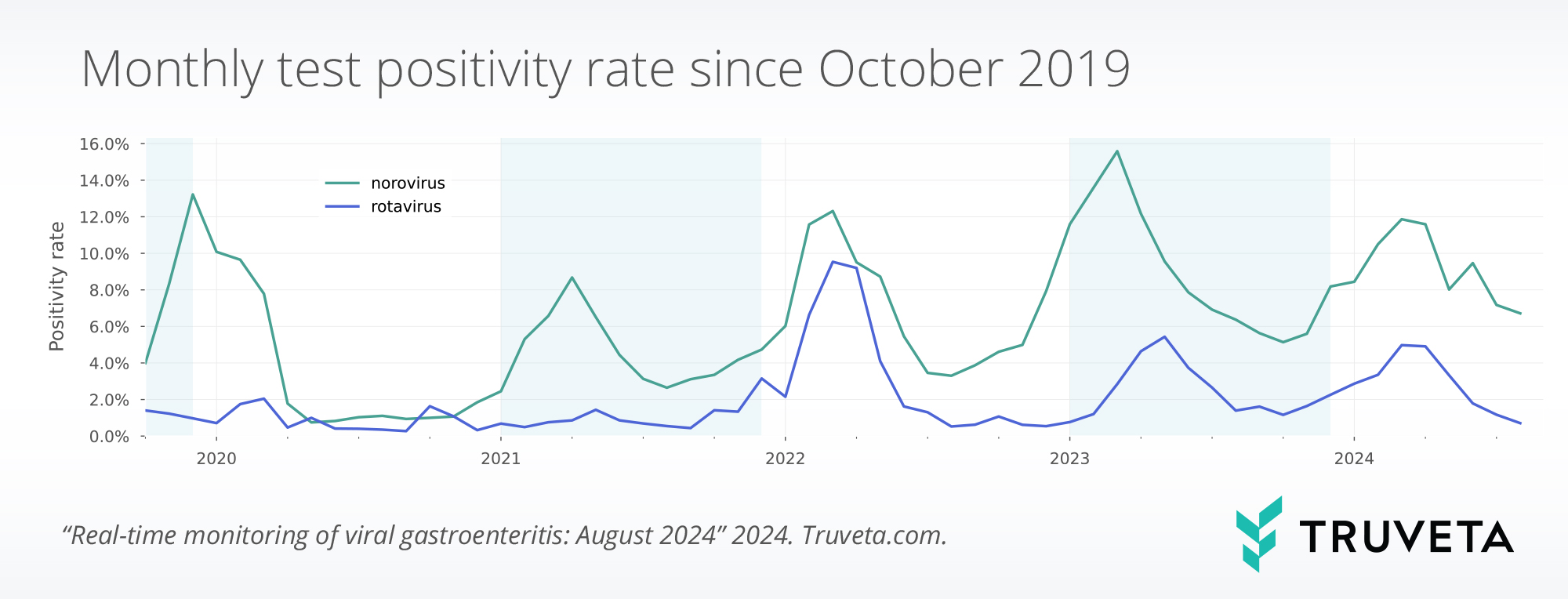
Infants and children (age 0-4)
For this younger population, the hospitalizations associated with these two viruses accounted for 0.08% of all hospitalizations in August (+196.7% from July 2024). Both norovirus- and rotavirus-related hospitalizations increased (+256.0% and +137.3% respectively).
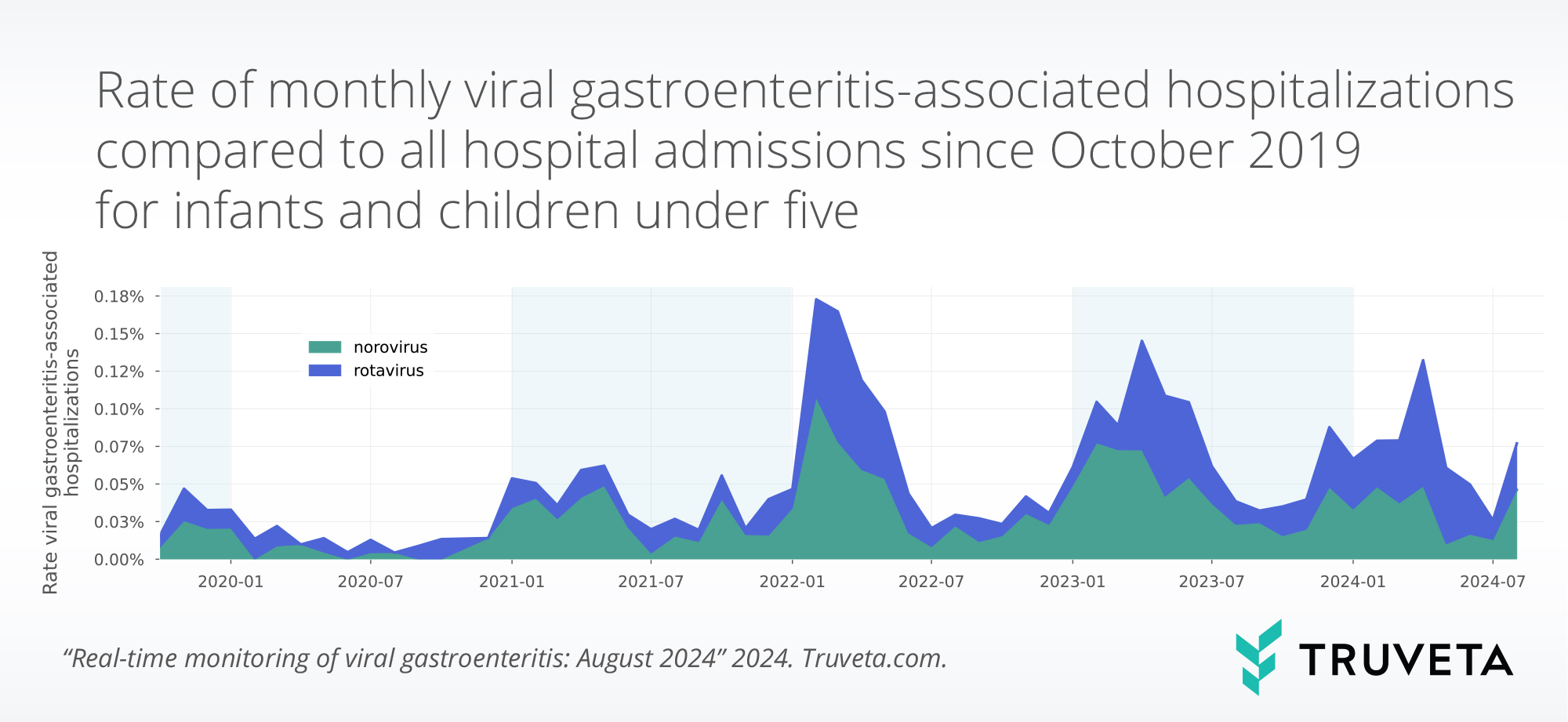
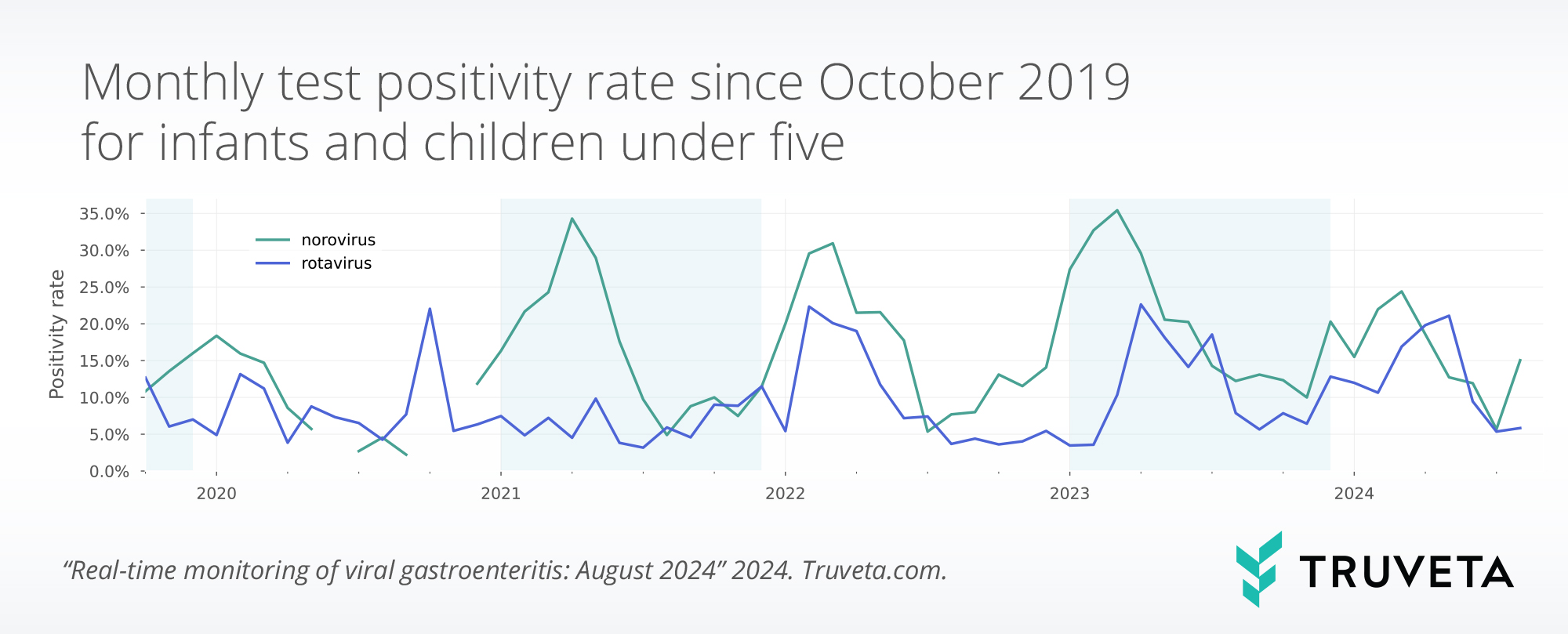
Older adults (age 65 and over)
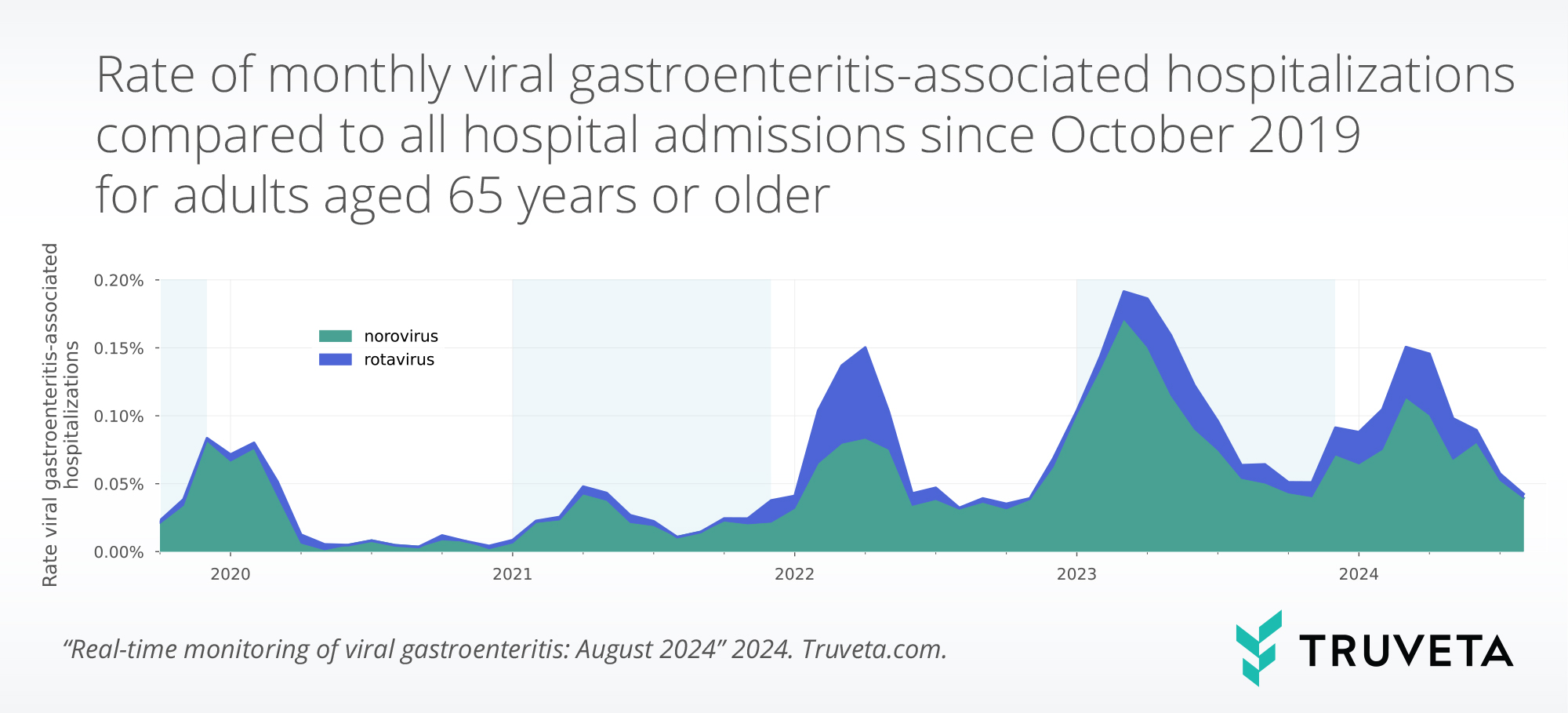
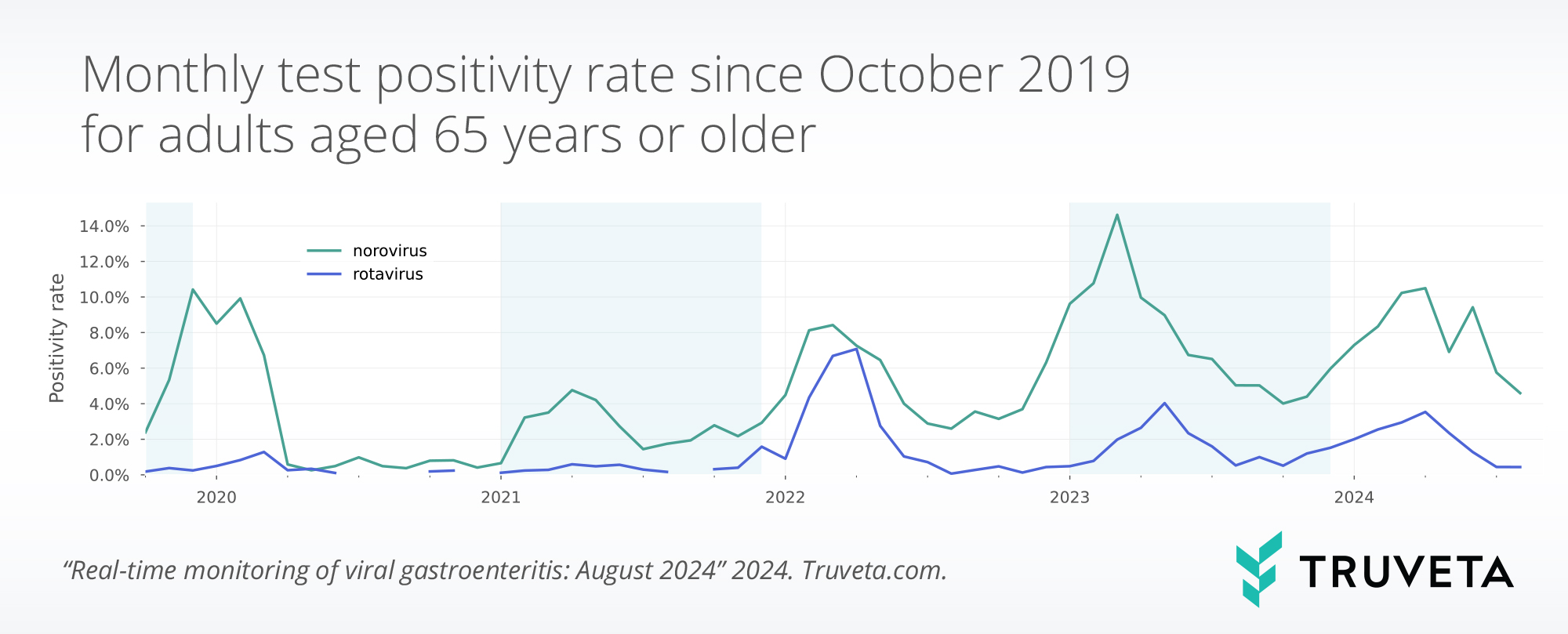
Discussion
We will continue to monitor viral gastroenteritis-associated hospitalizations overall and for higher risk populations.
Again, see the complete report on MedRxiv or explore the data directly within Truveta Studio.

